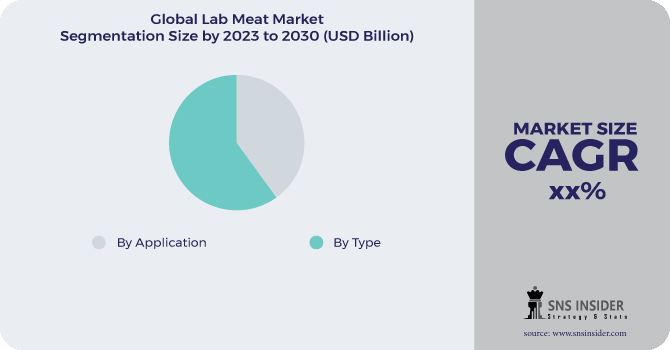Lab Meat Market Report Scope & Overview:
Lab Meat Market size is at an extremely early stage and is, to begin with, driven by its eco-accommodating perspective. The full-scale business feasibility of refined meat is supposed to diminish the significant ecological expenses of meat creation. The asset concentrated character of traditional meat creation will likewise be tended to as the perfect meat will just require food of refined cells as opposed to a whole creature. The tactile parts of lab-developed meat are anyway going about as an impermanent limitation for the market which makers are attempting to address. The expense seriousness of lab-developed meat that is supposed to accomplish within a reasonable time frame will go about as a lab-developed meat market learning experience.
.png)
The vegetarian pattern resonating in the worldwide commercial center is staying put. The ecological worries encompassing creature-based food items have bumped purchasers to look for economical choices - the food processors are additionally leaving on imaginative choices, and lab-developed meat is one of them. It is otherwise called refined meat or clean meat. A few new companies have entered the lab-developed meat market and have likewise gotten help from unmistakable associations. For example, Cargill has supported Mosa Meat, a Dutch food innovation organization, making creation techniques for refined meat.
The underlying interest for such refined meats has been arising structure an assortment of food service channels - organizations are creating beef, chicken, duck, and pork cells to be used in prepared-to-eat food items like burgers and chunks.
Market Dynamics:
Driving Factors:
- The expense seriousness of lab-developed meat that is supposed to accomplish within a reasonable time frame.
Restraining Factors:
- The full-scale business reasonability of refined meat.
- The tactile parts of lab-developed meat.
Opportunities:
- The rising interest for the item from the food service area.
Challenges:
- The vague administrative system overseeing such clever food sources.
Impact of Covid-19:
This market might develop emphatically during the forthcoming years because of the reception of online retail. The disturbing spike in COVID diseases and the rise of a few variations prompted the closure of disconnected stores, consequently requiring the reception of online retail. Moreover, rising spending on food varieties might cultivate the reception of the item from crowds. Likewise, the reception of robotized creation procedures and sterilization strategies might cultivate industry development during the pandemic.
Market Estimations:
Lab-developed beef is supposed to lead the lab-developed meat market given the interest situation from the foodservice stages. Also, the underlying R&D endeavors were channelized at delivering beef, the commercialization for which will be active when contrasted with other meat. The reasonable development of the market lies in the modern, bother-free, and quick progress of such clever items from the lab to a versatile business office.
By type:
Beef is the culinary name for meat from dairy cows. In antiquated times, individuals pursued aurochs and later prepared them. Pork is the culinary name for the meat of the homegrown pig. It is the most normally consumed meat around the world, with proof of pig farming tracing back to 5000 BC. Poultry is a tamed avian species that can be raised for eggs, meat as well as plumes. Seafood is any sort of sea life saw as food by individuals, prominently including fish and shellfish. Shellfish incorporate different types of molluscs, scavengers, and echinoderms.
By Application:
Third Largest Food and Grocery market on the planet. Food and staple is the biggest portion in the Indian retail area, having an open door worth $570 bn and representing 66% of the nation's absolute retail spend. The foodservice business is separated by portions including full help, fast assistance, eating and drinking, and retail.
Market Segmentation:
By Type:
-
Beef
-
Pork
-
Poultry
-
Seafood
By Application:
-
Food Retail
-
Foodservice Channels

Regional Analysis:
-
North America
-
USA
-
Canada
-
Mexico
-
-
Europe
-
Germany
-
UK
-
France
-
Italy
-
Spain
-
The Netherlands
-
Rest of Europe
-
-
Asia-Pacific
-
Japan
-
south Korea
-
China
-
India
-
Australia
-
Rest of Asia-Pacific
-
-
The Middle East & Africa
-
Israel
-
UAE
-
South Africa
-
Rest of Middle East & Africa
-
-
Latin America
-
Brazil
-
Argentina
-
Rest of Latin America
-
North America is projected to arise as a predominant provincial lab-developed meat portion of the overall industry for lab-developed meat inferable from the security worries for meat. Shoppers have become progressively aware of the negative well-being effects of red meat items. The mission for reasonable options has provoked significant meat and food organizations to put resources into the improvement of lab-developed meat. The nations like the U.S. also, China where chicken and duck items are famous will be a portion of the possible business sectors for lab-developed meat.
Key Players:
Key Players of Lab-Grown Meat Market are Aleph Farms, Mosa Meat, Just Inc., Meatable, Memphis Meats, SuperMeat, Finless Foods.
Aleph Farms-Company Financial Analysis


